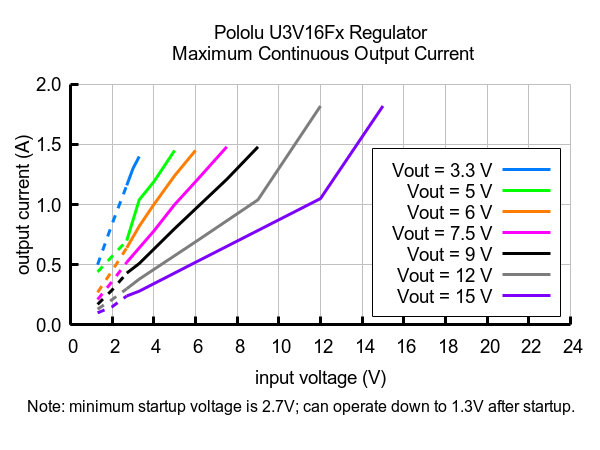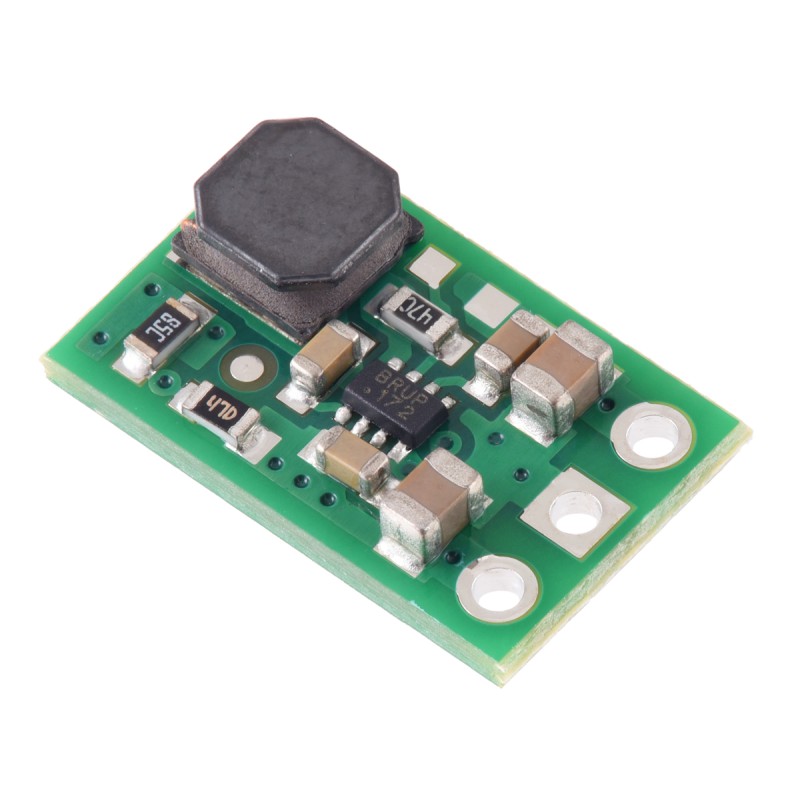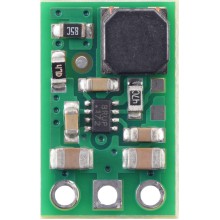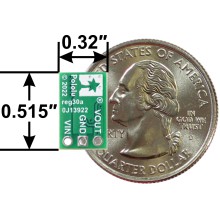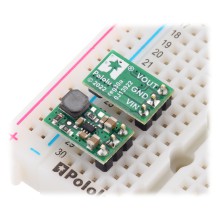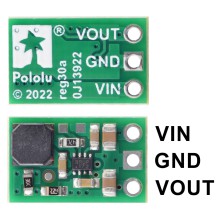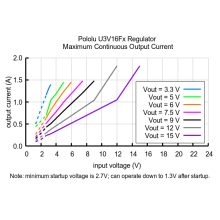The U3V16Fx family of boost (step-up) voltage regulators generate higher output voltages from input voltages as low as 1.3 V. (Note: The minimum start-up voltage is 2.7 V; see the connections section for details.) They are switching regulators (also called switched-mode power supplies (SMPS) or DC-to-DC converters) and have a typical efficiency between 85% to 95%.
The regulators actively limit the instantaneous input currents to 2 A when boosting, and input currents up to around 1.6 A can typically be maintained for many minutes without triggering thermal shutdown, though the actual performance depends on the input and output voltages as well as external factors such as ambient temperature and airflow. For boost regulators, the output current equals the input current times the efficiency divided by the boost ratio of VOUT to VIN, so the more you are boosting, the lower the maximum output current will be (see the maximum continuous output current section below for performance graphs).
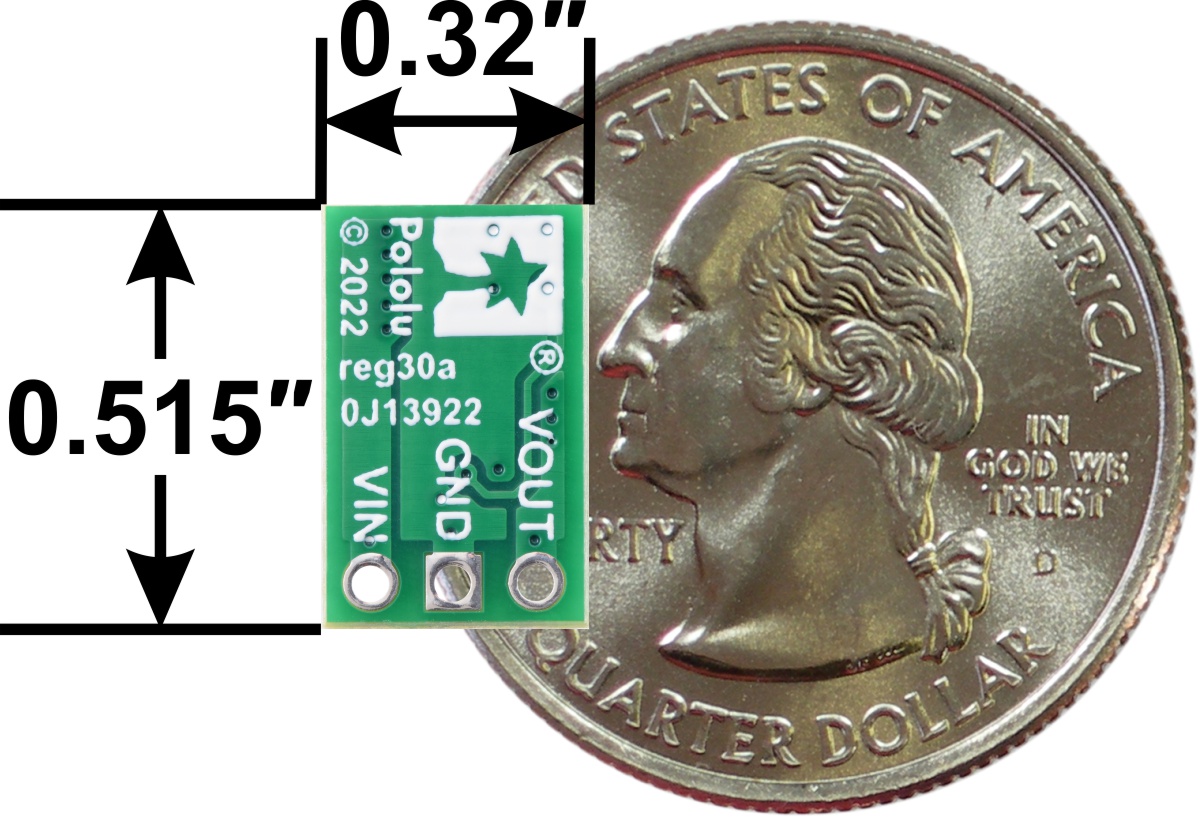
These regulators feature a variety of built-in protections, including cycle-by-cycle input current limiting, under-voltage lockout, and over-temperature shutdown.
Warning: This boost regulator uses the typical topology that connects the input to the output through an inductor and diode, with nothing to completely break that current path. Therefore, the input voltage will go through to the output even when the regulator is disabled, and exposure to short circuits or other excessive loads will damage the regulator. This regulator also does not have protection against reverse voltage.
The U3V16x family includes seven versions with fixed output voltages ranging from 3.3 V to 15 V.
- U3V16F3: Fixed 3.3V output
- U3V16F5: Fixed 5V output
- U3V16F6: Fixed 6V output
- U3V16F7: Fixed 7.5V output
- U3V16F9: Fixed 9V output
- U3V16F12: Fixed 12V output
- U3V16F15: Fixed 15V output
Features and specifications
- Output voltage: 9 V with 4% accuracy
- Input voltage: 1.3 V to 16 V (Note: minimum start-up voltage is 2.7 V)
- Typical efficiency of 85% to 95%, depending on input voltage, output voltage, and load (see the efficiency graph below)
- Switching frequency: ~1.2 MHz under heavy loads
- Power-save mode that increases light load efficiency by reducing switching frequency
- Typical no-load quiescent currents under 1 mA (see the quiescent current graph below)
- 2 A switch current limit
- Typical continuous input currents up to around 1.6 A (see the maximum continuous output current graph below)
- Tolerates input voltage above output set voltage (output will track input, see the connections section for details)
- Integrated protections:
- Over-temperature shutdown
- Soft-start feature limits inrush current and gradually ramps output voltage
- Under-voltage lockout
- Compact size: 0.515″ × 0.32″ × 0.1″ (13.1 × 8.1 × 3 mm)
- Weight: 0.4 g
The different versions of the board all look very similar, so you might consider adding your own markings or other distinguishing features if you have multiple versions that you need to be able to tell apart.
The input voltage, VIN, must initially be at least 2.7 V and should not exceed 16 V. Once the regulator is on, VIN can fall as low as 1.3 V and the regulator will continue to operate. Please note that if VIN is higher than VOUT, the higher input voltage will show up on the output, which could be dangerous for your connected load if it cannot tolerate that higher voltage. The regulator itself should generally be able to tolerate such pass-through voltages as long as they do not exceed 16 V and the load is not trying to draw currents through the regulator that are beyond what the regulator can withstand.
VOUT is the regulated output voltage. The regulator’s soft-start feature gradually ramps up the VOUT voltage on start-up to limit in-rush current draw. The U3V16Fx regulators do not have short-circuit protection, so they could be damaged if exposed to output shorts or excessive loads.
